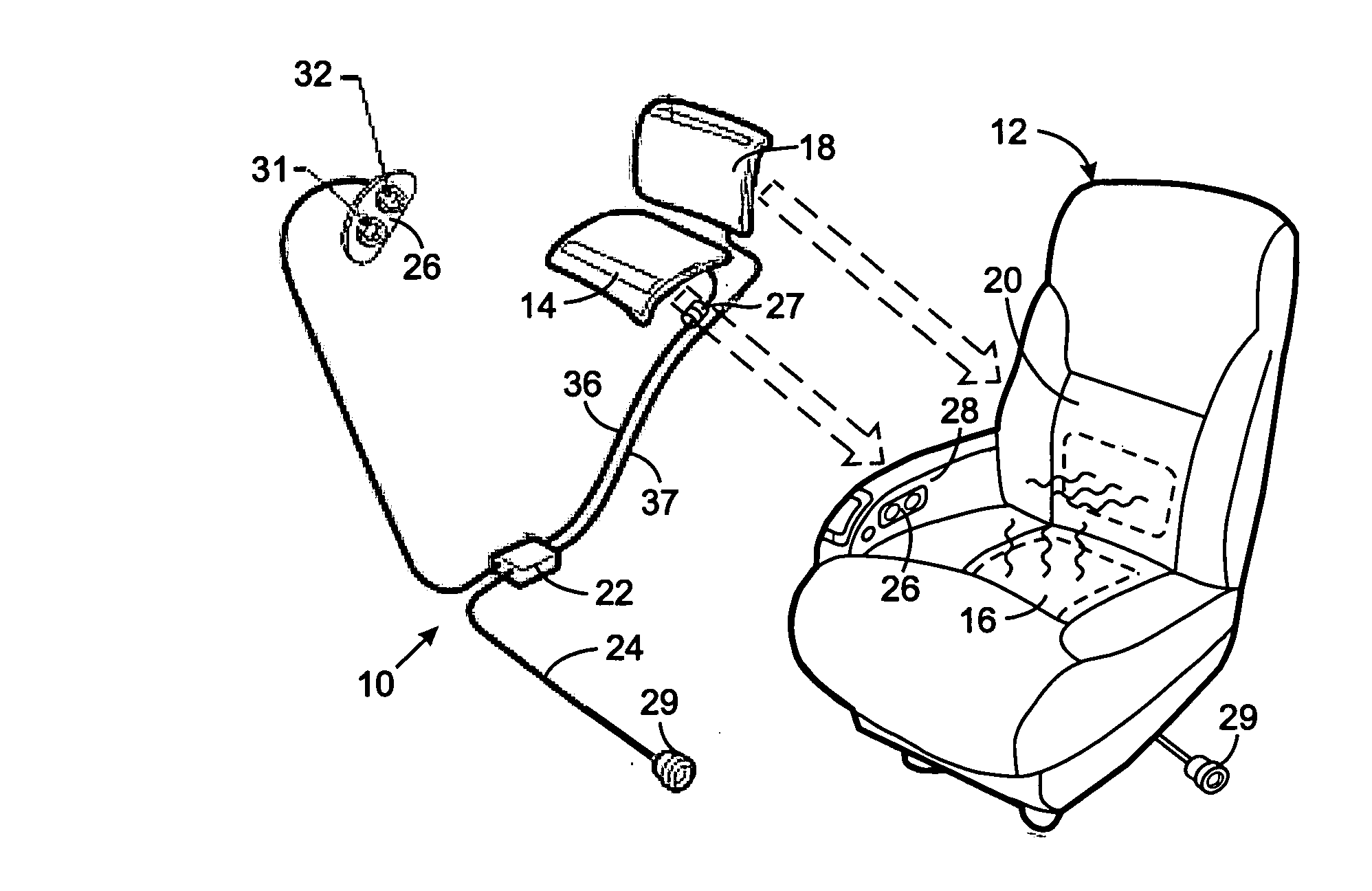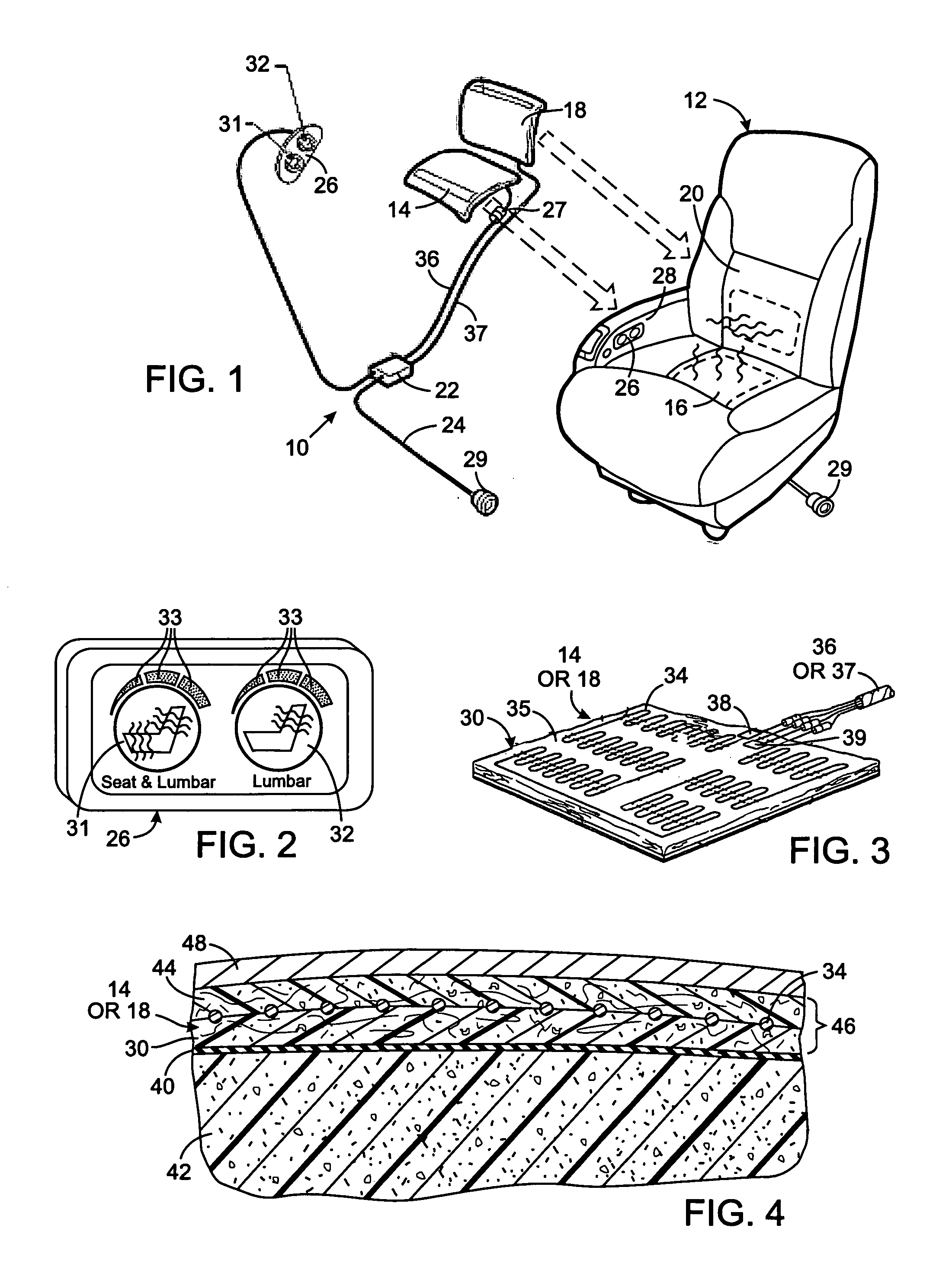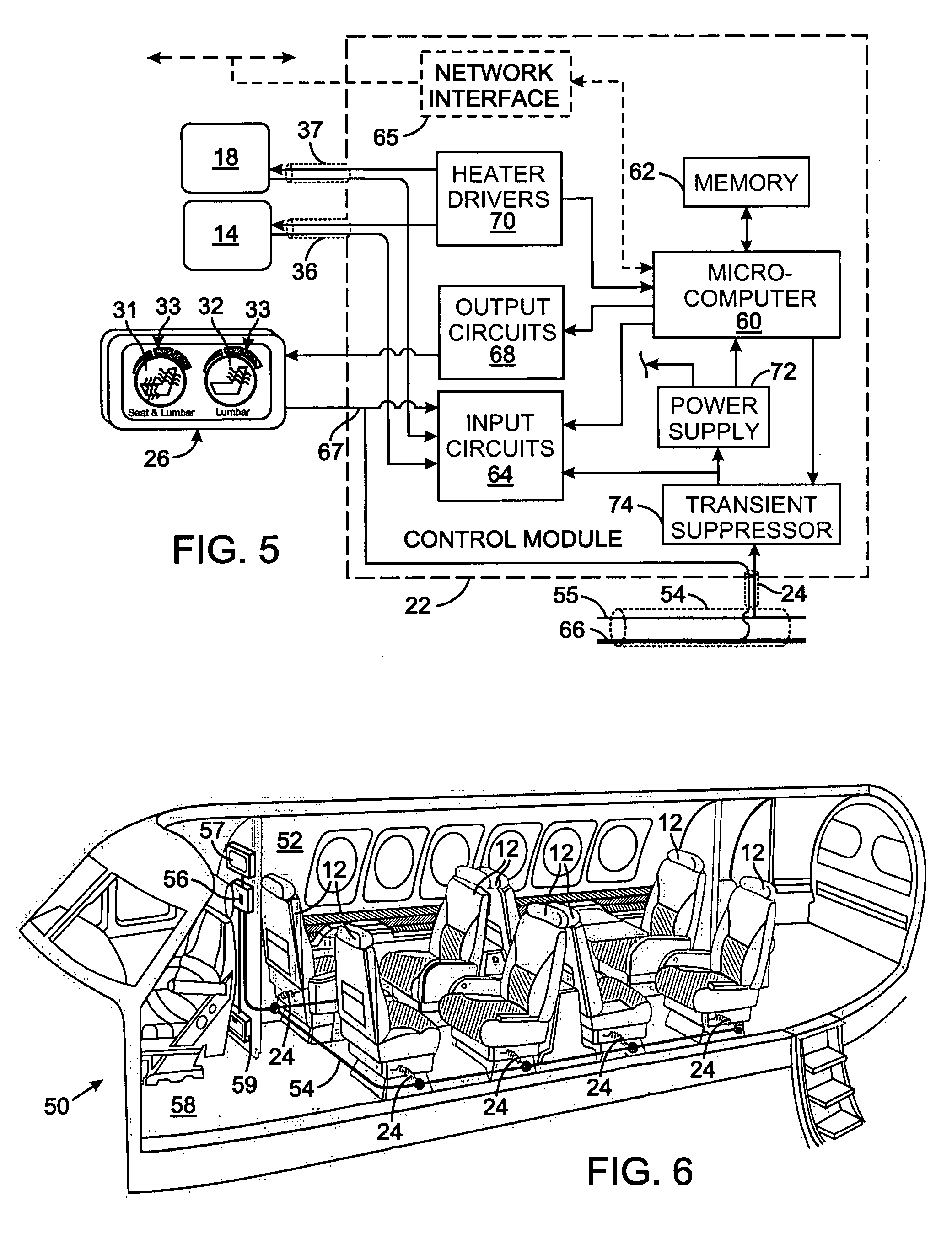Heater system for an aircraft seat
- Summary
- Abstract
- Description
- Claims
- Application Information
AI Technical Summary
Benefits of technology
Problems solved by technology
Method used
Image
Examples
Embodiment Construction
[0018]With initial reference to FIG. 1, one implementation of a seat heater system 10 for an aircraft passenger seat 12 comprises a first heater pad 14 for the seat bottom cushion 16 and a second heater pad 18 for the seat back cushion 20. The first and second heater pads 14 and 18 receive direct current (DC) power from a control module 22, that is beneath the seat and connected by a power cable 24 to the electrical system of the aircraft. Alternatively, when two or more seats are adjacent each other, a single control module can govern operation of the heater pads in those seats. The amount of electricity applied to each of the heater pads 14 and 18 by the control module 22, and thus the level of heat, is determined in response to activation of a switch module 26 located in an arm rest 28 of the passenger seat 12. The control module 22 cycles the first and second heater pads 14 and 18 on and off at different intervals depending on the level of heat desired by the seat occupant. Circ...
PUM
 Login to View More
Login to View More Abstract
Description
Claims
Application Information
 Login to View More
Login to View More - Generate Ideas
- Intellectual Property
- Life Sciences
- Materials
- Tech Scout
- Unparalleled Data Quality
- Higher Quality Content
- 60% Fewer Hallucinations
Browse by: Latest US Patents, China's latest patents, Technical Efficacy Thesaurus, Application Domain, Technology Topic, Popular Technical Reports.
© 2025 PatSnap. All rights reserved.Legal|Privacy policy|Modern Slavery Act Transparency Statement|Sitemap|About US| Contact US: help@patsnap.com



